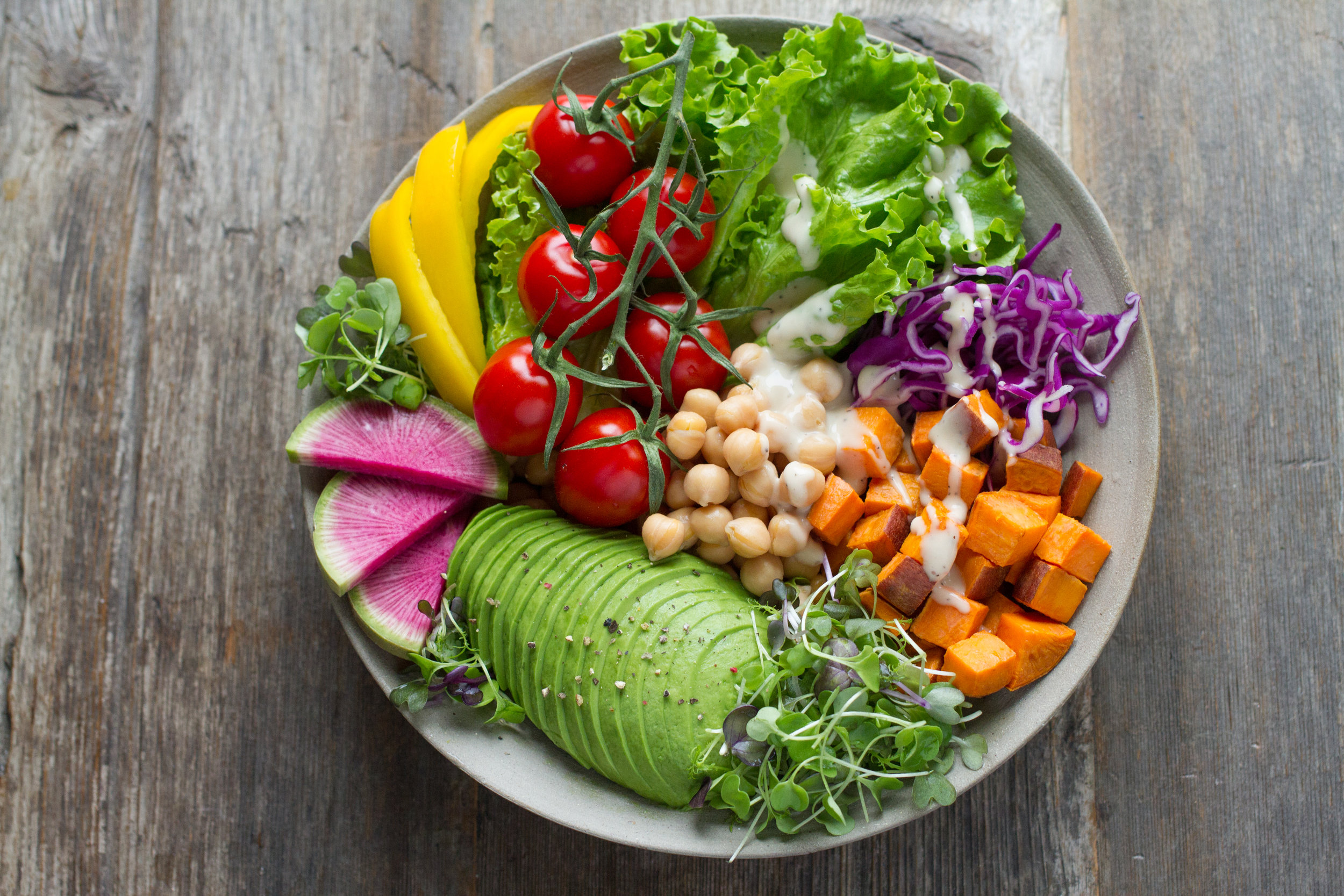What does nutrient dense mean?
Before we get into the topic of nutrient dense, we need to understand what the nutrients are. Nutrients are broken down into two categories: macronutrients and micronutrients. The macronutrients include fat, protein, carbohydrates, and water. The micronutrients include vitamins and minerals. Generally speaking, the macronutrients are needed in larger quantities and provide energy (calories) while the micronutrients are needed in much smaller quantities compared to macronutrients. Make no mistake however, all of these nutrients combined (fat, protein, carbohydrates, water, vitamins, and minerals) are considered essential nutrients. Essential means they need to be consumed through food because our bodies cannot produce them on its own for proper survival and disease prevention. Most people are aware of the macronutrients while a lot of people are not even sure what is considered a vitamin and what is considered a mineral, let alone which foods contain specific micronutrients. Unfortunately, there is a large emphasis on the macronutrients while the micronutrients are often overlooked. (link here for the dieting mindset)
A food is considered nutrient dense when it contains a high level of micronutrients and phytochemicals per calories. Phytochemicalsare plant derived chemicals that positively affect your health and immune system, sometimes referred to as antioxidants. Notice phytochemicals are plant-derived. Phytochemicals make up the colors of plants (red, yellow, orange, green, blue, white, and purple) and are not found in animal derived foods/products. Plant-based foods are complex mixtures of thousands of different bioactive compounds, making research extremely difficult to pinpoint specific phytochemicals, especially considering that there are thousands of different kinds and they work in mysterious ways together! Currently, phytochemicals are not considered essential due to this limited research.
A pattern of eating is considered nutrient densewhen the foundation of the diet includes various micronutrients and phytochemical foods. Notice this concept does not say “100%”. If the majority of your foods on a daily, weekly, and monthly basis are nutrient dense, this means “there is room” for your favorite foods like pizza, cheese or ice cream. However, it does mean those foods are included minimally in your diet. If the majority of your consumption is high nutrient foods, you can also fit foods that are considered nutrient poor. Foods considered nutrient poor are not necessarily “bad foods”, they just contain more calories and less beneficial nutrients (like saturated fat, trans fat, refined carbohydrates, sodium, etc.) per potential health benefits. To explain the concept of nutrient dense, we will consider two different foods.
The first food will be ice cream. The creaminess of ice cream is due to its high fat and sugar content. One serving of ice cream (1/2 cup) is generally high in calories, saturated fat, sugar, and contains some calcium, vitamin A and protein. There are no phytochemicals present in ice cream (although there are always new products being created with attempts to enhance the nutritional quality of processed foods, meaning some ice cream products might attempt to add synthetic phytochemicals or other components to boost nutrients). In other words, the calories far outweigh any health benefits that ice cream can provide. This description of ice cream includes non-dairy ice cream as well (or vegan ice cream; just because it’s dairy free does not make it healthier). Another way to describe a food like this is containing “empty calories” meaning you’re getting nothing but calories and fat from this food source with little to no nutritional benefits. This is not to say that ice cream does not provide calcium, an essential nutrient. However, this is where the concept of nutrient dense most certainly can explain that the ratio of calories to beneficial nutrients are not ideal. It's like the disadvantages outweigh any advantages. Ice cream is considered a nutrient poor food (sorry ice cream lovers!).
The second food we will consider is kale. I’m choosing kale because kale is literally on the other end of the spectrum compared to ice cream, but keep in mind there are hundreds of healthy foods, and if you don’t like kale, you are not doomed! One cup of kale is made up of at least 20 different micronutrients (vitamins and minerals) and various phytochemicals (antioxidants) proven to benefit health. This is not even including the phytochemicals present in kale that have not yet been identified. Usually, the foods that contain the highest amount of known nutrients are also the ones that contain the most unknown nutrients. This same cup of kale is a mere 36 calories. (I don’t think I mentioned before, one typical serving of ice cream aka ½ a cup is about 160 calories, to put this in perspective.) To explain this simply, the health benefits of kale far outweigh the calories provided. Kale is considered a nutrient dense food.
Does ice cream need to be eliminated entirely from your diet? Absolutely not. What foods can be included in a healthy diet? Everything. This pattern of eating is not about completely eliminating foods or food groups or being overly restrictive, its about incorporating the proper balance of nutritious versus non-nutritious foods.
The point is this: foods that are extremely nutrient dense should make up the majority of your diet while foods (like ice cream) can be included but in smaller quantities. The balance between the two can take some practice, but research shows these shifts are entirely possible and can have a profound impact on our health and wellness!
PS - If you haven’t already, check out my post on an Anti-Inflammatory Diet, which is based on a nutrient-dense diet.

